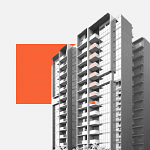Rents rise 2.5% in Q3 for higher-grade office space, but stay put for rest of Singapore market
Steady demand for prime space is being supported by flight to quality and easing interest rates

[SINGAPORE] The median monthly rent for better-quality office buildings in the city area rose 2.5 per cent in the third quarter over the previous quarter, data from the Urban Redevelopment Authority (URA) showed.
This followed two consecutive quarters of decline in the median rent for Category 1 offices.
Vacancy for the category tightened to 9.9 per cent as at the end of Q3, from 11 per cent in the previous quarter, based on URA’s data released on Friday (Oct 24). Cushman & Wakefield’s research head for South-east Asia, Wong Xian Yang, said this reflects “steady take-up of prime space amid easing interest-rate concerns”.
“A quiet flight-to-quality trend continues… while older, less-connected properties face obsolescence.”
Leonard Tay, research head, Knight Frank Singapore
On the other hand, the median rent for Category 2 offices – which cover the remaining office space in Singapore – was unchanged in Q3, following three quarters of rental growth.
Vacancy for the category inched up to 11.7 per cent as at the quarter’s end, from 11.6 per cent as at the end of Q2. “This reflects the balancing of market conditions amid a flight to quality,” said Wong. The above rent figures are based on the lease contract date.
URA’s office rental index for Singapore’s central region dipped 0.1 per cent quarter on quarter in Q3, following a 0.3 per cent quarter-on-quarter drop in Q2. The marginal drop in Q3 is seen as a broader trend of rent stabilisation amid two countervailing forces at play: tightening supply and cautious demand.
A NEWSLETTER FOR YOU

Tuesday, 12 pm
Property Insights
Get an exclusive analysis of real estate and property news in Singapore and beyond.
The islandwide office vacancy rate fell to 11.2 per cent as at the end of Q3, from 11.4 per cent as at the end of Q2.
CBRE’s head of research for South-east Asia Tricia Song said that “despite global economic headwinds, our numbers show that Singapore’s core CBD Grade-A office market remained resilient, with vacancy shrinking from 5.9 per cent in Q1 2025 to 5.1 per cent in Q3 2025”.
IOI Central Boulevard Towers, the most recent office development in the core CBD Grade-A segment – it was fully completed in Q3 2024 – achieved well over 90 per cent commitment by Q3 2025.
“Outside the CBD, demand is also robust; Paya Lebar Green reached full occupancy following Visa’s relocation,” Song added.
Caution
On a more sobering note, Catherine He, Colliers’ head of research for Singapore, said tenant enquiries and inspection activity have slowed noticeably compared with the first half of 2025, “reflecting a more cautious approach amid persistent macroeconomic uncertainty and the absence of strong growth drivers”.
“Occupiers with upcoming lease expiries have started their review processes earlier, with some exploring fitted solutions to manage costs. Office demand remained diversified across sectors, as overall momentum has softened,” she added.
Leonard Tay, research head at Knight Frank Singapore, observed that many occupiers preferred to stay put and renew leases in their current locations instead of expanding or relocating, especially if capital outlay were to be incurred amid the wider uncertainty.
“That said, a quiet flight-to-quality trend continues as occupiers right-size or modestly expand when leases expire, capitalising on stable rents to move into newer buildings offering enhanced tenant experiences. Flexible co-working spaces also attract creative and lifestyle sectors, while older, less connected properties face growing obsolescence,” Tay added.
Colliers’ He said that while expansion activity was limited, some firms transitioned from flexible to permanent space, or expanded within the same building.
Backfilling challenge
Despite the lower vacancy levels, she noted that a growing number of assets are facing challenges in backfilling space vacated by tenants moving to better-quality buildings due to muted demand.
For Grade-A offices in the Downtown Core, a small supply pipeline in the near term is expected to continue supporting measured rental growth.
As Cushman & Wakefield’s Wong pointed out: “The office pipeline in this segment remains tight over the next two years, with only Shaw Tower in Beach Road and Newport Tower in Anson Road slated for completion in 2026 and 2027, respectively.”
The two projects will add about 655,000 square feet (sq ft) of net lettable area (NLA), equating to an average annual supply completion of just 330,000 sq ft. This is about 38.5 per cent of the historical average annual demand of 850,000 sq ft from 2015 to 2024 in the segment.
Wong is upbeat about a pick-up in relocation activity in 2026. “Demand for Grade-A offices remains strong as occupiers prioritise modern, well-located projects. Lower interest rates globally are expected to encourage businesses to expand,” he said.
“Moreover, the robust return-to-office momentum may prompt occupiers to reassess their space requirements. Potential redevelopment of older buildings could generate displacement demand.”
URA’s data showed that islandwide, the amount of occupied office space rose by 10,764 sq ft of NLA in Q3, after increasing by 96,875 sq ft in Q2. On the other hand, the stock of office space contracted by 258,334 sq ft of NLA in Q3, after declining by 193,750 sq ft in Q2.
URA’s price index of office space in the central region fell 0.2 per cent quarter on quarter in Q3, after easing 1.1 per cent in the preceding quarter.
Copyright SPH Media. All rights reserved.


